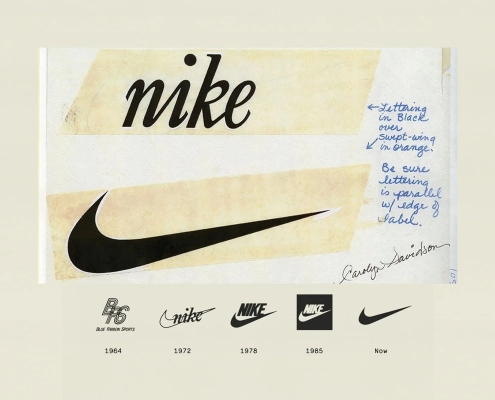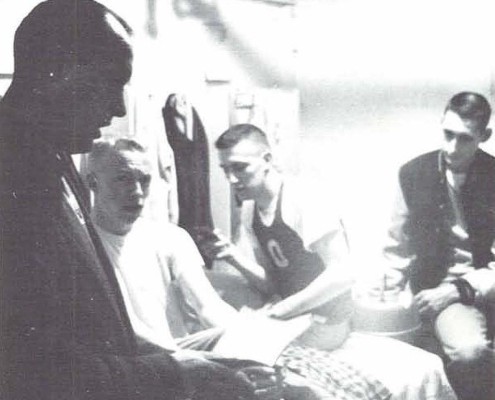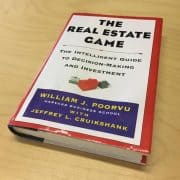Book Review: Shoe Dog – A Memoir by the Creator of Nike
Shoe Dog: Key Takeaways for the Real Estate Entrepreneur
During a recent 12-hour car trip, I found myself immersed in the world of Phil Knight, founder of Nike, through his audiobook memoir: “Shoe Dog.” As the miles rolled by, I was inspired by Knight’s relentless persistence in the early years of what was then Blue Ribbon Sports (later Nike). From his humble beginnings of selling shoes out of the trunk of his car to building Nike into a global icon, Knight’s story is a testament to the power of perseverance.
His unwavering commitment to his vision, even in the face of seemingly insurmountable challenges, offers a compelling lesson in resilience and adaptability for real estate entrepreneurs. It’s a narrative that not only captivates but inspires, reminding us that the path to success is often paved with obstacles, and it’s our determination to overcome them that defines our journey.
Full Title: “Shoe Dog: A Memoir by the Creator of Nike”
Author: Phil Knight

Early version of the Nike logo, created by Carolyn Davidson, together with the evolution of the logo since its launch as Blue Ribbon Sports in the early 1960s.
Fresh out of business school, Phil Knight borrowed fifty dollars from his father and embarked on a journey that would redefine the athletic footwear industry. With a simple mission – born in grad school – to import high-quality, low-cost running shoes from Japan, he began selling shoes from the trunk of his car in 1963, grossing eight thousand dollars that first year. Fast forward to today, and Nike’s annual sales top $30 billion, standing as a gold standard in this age of start-ups, with its swoosh recognized globally.
But the path to success was far from smooth. In “Shoe Dog,” Knight unveils the man behind the swoosh, recounting his decision at twenty-four to forge his own path rather than work for a big corporation. He shares the risks, setbacks, ruthless competitors, and hostile bankers he faced, along with his thrilling triumphs. Central to Nike’s story are the relationships that formed its heart and soul, particularly with his former track coach, Bill Bowerman, and his first employees, a band of swoosh-crazed brothers he affectionately dubbed the “Buttfaces”.
For real estate entrepreneurs, Knight’s story offers more than a fascinating business history; it provides valuable insights into the entrepreneurial spirit, resilience, innovation, and the power of a shared vision. The following five key insights, drawn from Knight’s experiences, provide practical lessons and inspiration for those entrepreneurs in our audience navigating the complex and often unpredictable world of real estate:
1. Embrace the Struggle
Knight’s journey wasn’t smooth sailing. He faced constant challenges and setbacks. The willingness to endure hardships and keep pushing forward is a vital trait for any entrepreneur.
One of the most compelling examples of embracing the struggle in “Shoe Dog” is Phil Knight’s early battle with cash flow.
As Nike (originally Blue Ribbon Sports) began to grow, Knight faced a constant struggle with cash flow. The company’s success in selling shoes meant they needed to order even more from their Japanese suppliers. However, they had to pay for the shoes long before they collected money from their customers. This created a cash crunch that threatened to put them out of business almost every season.
Knight spent many sleepless nights worrying about how to meet the next bill and was often on the brink of bankruptcy. He had to plead with banks for loans, negotiate hard with suppliers, and even sold his personal car at one point to keep the company afloat.
Despite these immense financial pressures, Knight never gave up on his vision. He continued to push forward, believing in his company and the product he was selling. His willingness to endure this ongoing struggle, to face it head-on without flinching, was a key factor in Nike’s eventual success.
This story illustrates the often unseen hardships that entrepreneurs face. It’s a reminder that the path to success is rarely easy and that the ability to embrace and overcome struggle is a vital part of the entrepreneurial journey. It’s a lesson that can resonate with anyone in the business world, including those in the complex field of real estate investment and development.

By University of Oregon – https://scholarsbank.uoregon.edu/xmlui/handle/1794/11195, Public Domain, https://commons.wikimedia.org/w/index.php?curid=116802165
2. Build a Strong Team
Surrounding yourself with passionate and talented individuals who share your vision can make all the difference. Knight’s relationship with his early employees was a crucial part of Nike’s success.
One of the most notable examples is the story of Bill Bowerman, Knight’s former track coach at the University of Oregon. Bowerman became a co-founder of Nike and was instrumental in its growth. He wasn’t just a business partner; he was a mentor and a visionary who brought innovation to the company.
Bowerman’s passion for improving athletic performance led him to experiment with different materials and designs to create a better running shoe. Famously, he even used his wife’s waffle iron to create a new type of sole that would provide better traction. This experiment led to the creation of the Nike “Waffle Trainer,” a shoe that became a massive success.
But Bowerman wasn’t the only key team member. Knight also surrounded himself with a group of passionate and dedicated individuals, often referred to as the “Buttfaces.” This nickname, coined by the team itself, reflected their candid and no-nonsense approach to business. They were a group of people who shared Knight’s vision and were willing to work tirelessly to achieve it.
The synergy between Knight, Bowerman, and the rest of the team created a culture of innovation, trust, and shared purpose. They challenged each other, supported each other, and were united in their commitment to building something great.
This story underscores the importance of not just hiring employees but building a cohesive team that shares a common vision and values. It’s a lesson that transcends industries and is particularly relevant in real estate, where collaboration and shared expertise can be the difference between success and failure in a project.
3. Stay True to Your Vision
Even when faced with skepticism and doubt, Knight remained committed to his vision for Nike. Having a clear and unwavering vision can guide an entrepreneur through the most turbulent times.
One story that stands out is Knight’s early vision of importing high-quality, low-cost running shoes from Japan. In the 1960s, the athletic shoe market was dominated by German brands, and the idea of Japanese running shoes was met with skepticism.
Knight’s vision began with a college paper he wrote at Stanford, where he saw an opportunity to disrupt the market by importing shoes from Japan. Despite doubts from others, he took a leap of faith and pursued this vision by traveling to Japan. He secured a distribution deal with Onitsuka Tiger (now ASICS), a decision that was unconventional at the time.
The relationship with Onitsuka was fraught with challenges, including communication barriers, quality control issues, and eventual legal battles. Despite these obstacles, Knight remained committed to his vision of providing athletes with affordable, high-quality footwear.
Even when the relationship with Onitsuka soured, leading to a legal fight, Knight’s belief in his vision didn’t waver. He and his team began developing their own brand, which would become Nike. They continued to innovate and push the boundaries of what was possible in athletic footwear.
Knight’s unwavering commitment to his vision, even in the face of skepticism, setbacks, and outright opposition, was a driving force behind Nike’s success. It’s a powerful reminder that staying true to a clear and compelling vision can guide an entrepreneur through the most challenging times.
This lesson is particularly resonant in the real estate industry, where market conditions, regulations, and competition can create significant obstacles. Having a clear vision and staying committed to it can be a guiding star, helping to navigate the complexities and uncertainties of the field.

By Kazuhiro Keino – NIKE WAFFLE RACER VINTAGE, CC BY 2.0, https://commons.wikimedia.org/w/index.php?curid=110137658
4. Understand Your Market.
Knight’s deep understanding of the running community and his target market allowed him to create products that resonated with his audience. Knowing your market inside and out is essential for creating products or services that meet real needs.
Knight was a runner himself, and his personal passion for running gave him unique insights into the needs and desires of other runners. He recognized that there was a growing community of runners who were dissatisfied with the available footwear options.
One of the ways Knight and his team understood their market was by engaging directly with it. They would sell shoes at track meets out of the trunk of a car, talking to runners, understanding their needs, and getting immediate feedback on what worked and what didn’t.
This hands-on approach allowed them to understand the specific requirements of serious runners. They learned about the importance of weight, cushioning, support, and traction. These insights informed their product development and marketing strategies, leading to innovations like the aforementioned Waffle Trainer.
Knight’s deep connection with the running community and his willingness to listen and learn from them helped Nike create products that resonated with their target audience. It wasn’t just about selling shoes; it was about understanding a culture and building products that met specific needs.
This story underscores the importance of truly understanding your market, not just from a distance but through direct engagement and empathy. It’s a lesson that can be applied to real estate or any other industry. By understanding the needs, preferences, and pain points of your target audience, you can create solutions that truly resonate and meet real needs. Whether it’s developing a new property or creating a financial model, understanding your market is key to success.
5. Be Ready to Adapt
The business landscape is ever-changing, and flexibility can be a significant asset. Knight’s ability to adapt to changing circumstances, whether it was dealing with suppliers, competitors, or internal challenges, was key to his success.
A standout example of this adaptability is the transition from being a distributor for Onitsuka Tiger to creating the Nike brand.
As mentioned earlier, Knight initially built his business by importing Onitsuka Tiger shoes from Japan. However, the relationship with Onitsuka began to deteriorate, leading to legal disputes and the eventual severing of ties.
Faced with the loss of his main product line, Knight could have seen this as a fatal blow to his business. Instead, he saw it as an opportunity to adapt and evolve. Recognizing that relying on a single supplier was a vulnerability, he decided to create his own brand.
Knight and his team worked tirelessly to design their own shoes, find manufacturing partners, and build a brand from scratch. This led to the creation of Nike and the iconic Swoosh logo.
The transition was fraught with challenges, including quality control issues, financial pressures, and the need to establish a new brand identity. But Knight’s willingness to adapt to changing circumstances, to pivot from distributor to manufacturer, and to embrace the risks and uncertainties of this new direction was key to Nike’s eventual success.
This story is a powerful illustration of the importance of adaptability in business. It’s a lesson that resonates across industries, including real estate, where market conditions, regulations, and consumer preferences can change rapidly. Being ready to adapt, to pivot when necessary, and to embrace change rather than resist it can be a defining factor in success. Whether it’s adapting to new technologies, shifting market trends, or regulatory changes, the ability to be flexible and responsive is a valuable asset.
Conclusion
These insights not only provide a roadmap for budding entrepreneurs but also resonate with the complexities and demands of the real estate industry. The blend of vision, resilience, teamwork, market understanding, and adaptability can be powerful tools in any entrepreneurial journey.
Rating: 8.0/10









